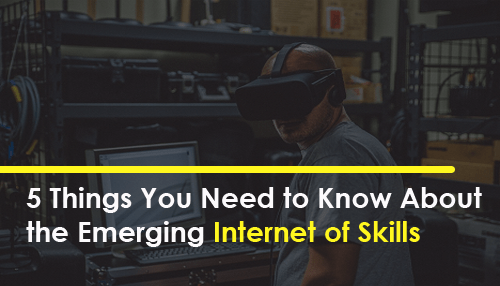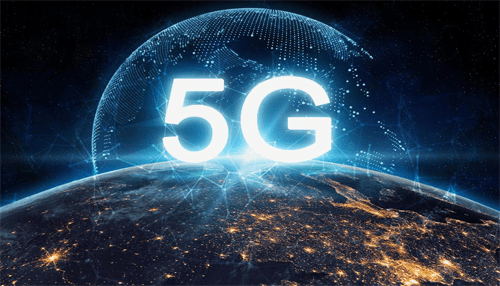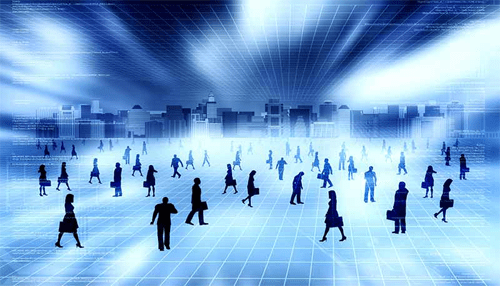Imagine a top surgeon in New York coordinating a life-saving operation in Miami without being physically present but while still hearing, feeling, and seeing just likeseeing, when performing it in their operating theatre.
Similarly, an expert can guide a technician on how to repair a particular machine remotely, as if they were in the same room.optimisation.
In 2015, Prof Mischa Dohler and his team came up with a term called “Internet of Skills” while working on the new ultra-low-latency 5G networks.
His inspiration came after the Ebola crisis in Africa, which got him thinking if doctors could treat patients remotely using virtual reality and affordable technology.
How can this be possible?
With the growth of 5G technology, soon, people will perform actions remotely.
It will allow anyone to transfer their skills and movements in real-time by use of haptic response (the recreation of touch senses) and robotics.
Modern technology can mimic the sense of touch by creating reactions that the user, on the other end, can feel through vibrations and forces.
For example, when exploring a virtual world, you can be tricked to feel you are in the physical world through sensory familiarities.
Therefore, the Internet of Skills (IoS) is a way to digitize skills with the sole purpose of spreading knowledge, skills, abilities, and understanding without geographic and economic boundaries.
#1 Example of IoS Applications
What are some applications of the Internet of Skills?
Learning to Play the Piano Remotely
You can digitize a piano and teach other people remotely.
First, the teacher or trainer puts on the haptic gloves which keep track of the precise movement of hands and fingers and stores it in a typical database.
If someone wants to learn how to play the piano, they can then download the data in real-time into an exoskeleton which will apply pressure and direct movement equal to the tutor’s moves.
The process goes on until the trainee attains muscle memory and can move and play with no help.
Performing a Surgery Remotely
Just like the above process, a surgeon wears haptic gloves which record all his movements. Others can download that data anywhere and use it to feed a robotic arm, which can then perform the exact procedure.
Similarly, sensors on the robotic arm transmit tactile data back to the surgeon who is performing the procedure off-site. A virtual reality headset helps the surgeon to operate through telepresence.
It also transmits a 360 live video to the surgeon to provide real visual information.
IoS applications can help to solve a worldwide crisis even in remote, inaccessible areas where there is a shortage of life-saving skills.
#2 What Makes the Internet of Skills to Work
The quality and effectiveness of algorithms involved in recording and processing mainly because of advancements in machine learning.
Today, there are new, improved VR and MR devices that now come with better resolutions. You can even get phone-based MR headsets, which shows that the field has significantly advanced.
The audio recording has also advanced with new, improved spatial audio microphones that capture sound in specific spatial in a room.
The audio helps in rendering 3D images of the room through filtration and separation of the sound sources.
The hepatic device allows users to feel motion, vibrations, and textures in 3D. However, it is still a challenge, as the tools are still complicated to set-up or configure.
#3 Advancement in Communication Technology
A 5G is the main requirement of the Internet of Skills to work. The large volumes of the 3D render need a high network bandwidth to be transmitted quickly between devices.
5G is 100X faster and powerful than 4G. A 2hr movie takes 3 seconds to download on 5G networks while it takes 6 minutes on 4G and 26 hours on 3G.
Besides that, 5G response time is 400X faster than an eye blink, which takes one millisecond.
Cloud technology will improve processing and flexibility. Edge cloud also helps to decrease battery usage as the device will have a reduced working rate.
#4 Further Research on IoS
Companies such as Ericsson, in conjunction with Universities and other companies, have undertaken intensive research to prove the benefits of IoS and also validate if it is feasible.
For example, they have used a remote-controlled robotic arm with ABB, whereby a person can control a robot remotely to perform specific tasks. While IoT and IIot are already embedded in supply chain and fleet management, IoS is another advancement that can drive process optimization.
They have also tested remote control of buses with SCANIA AB, remote control of an excavator and loader with Volvo AB and Kings College London remote Medical examination.
And controlling drones remotely, and they believe that the IoS will become accessible within the next few years when critical enabling factors such as 5G network and cloud technology takes root.
#5: The Future of the Internet of Skills
Finally, the IoS will soon become a vital part of the digital world as it can allow people to learn new things and deliver their skills remotely, therefore democratising labour worldwide just as the internet provides knowledge to everybody.
As technology advances, especially 5G communication, we can expect people to teach, gain new skills, and perform actions remotely.
There is a need for significant technology improvement in performance and devices for visual, haptic technology, audio, and 5G widespread rollout so that IoS can be fully adopted.
The Internet of Skills, just like the Internet of Things, will soon become part of how people find and take up new work, especially in specialised fields such as manufacturing or medicine.
However, there are still some concerns about how to solve security checks and the best practices before the Internet of Skills can fully function.
Therefore, unless there are firm guidelines and operating principles in place, the ability to carry out actions remotely without proper scrutiny may cause more harm than good.
—
Ashley Wilson is a content creator, writing about business and tech. She has been known to reference movies in casual conversation and enjoys baking homemade treats for her husband and their two felines, Lady and Gaga. You can get in touch with Ashley via Twitter.




